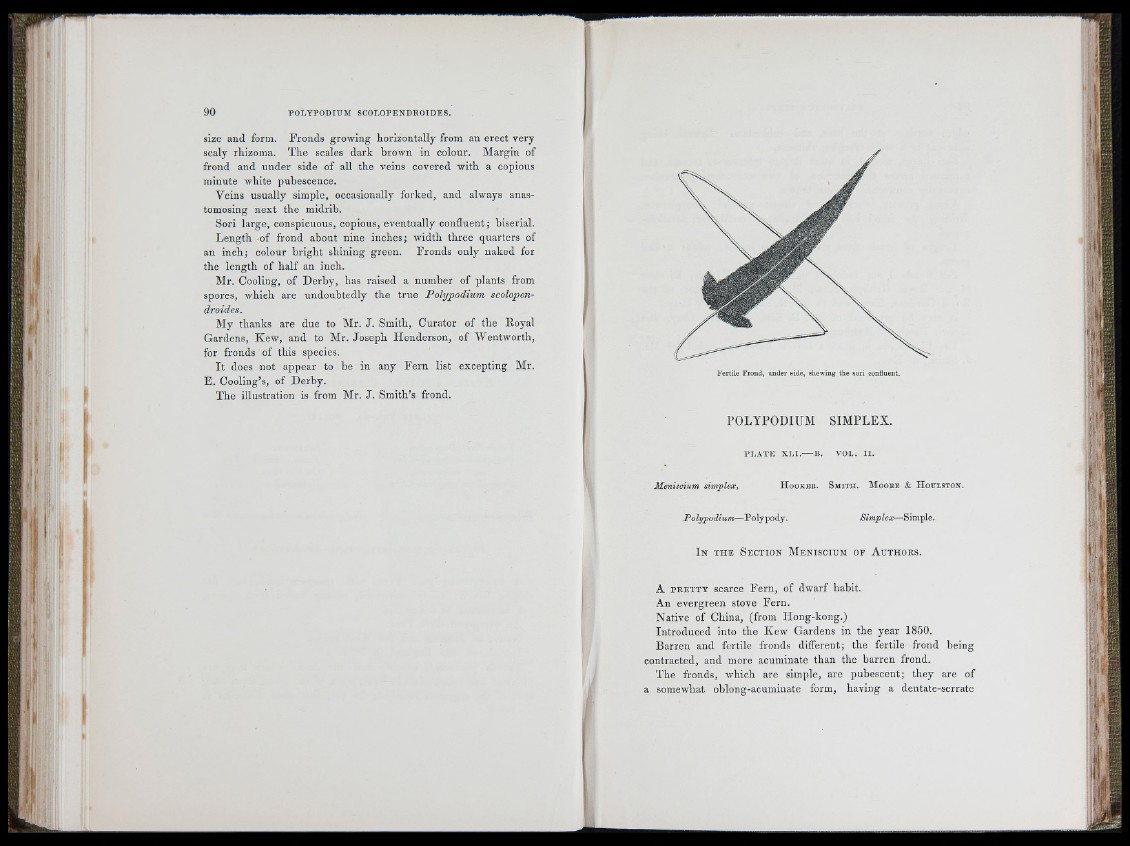
il
size and form. Fro n d s growing horizontally from an erect very
scaly rhizoma. The scales dark brown in colour. Ma rgin of
frond and u n d e r side of all the veins covered with a copious
minute white pubescence.
Veins usually simple, occasionally forked, and always anastomosing
n e x t the midrib.
Sori large, conspicuous, copious, eventually confluent; biserial.
L en g th -of frond about nine inches; wid th th re e quarters of
an in ch ; colour b rig h t shining green. Fro n d s only nak ed for
the length of h a lf an inch.
Mr. Cooling, of D e rb y , has raised a number of plants from
spores, which are undoubtedly th e tru e P olypodium scolopendroides.
My thanks are due to Air. J . Smith, Curator of th e Royal
Gardens, Kew, and to Air. Josep h H en d e rso n , of W en tw o rth ,
for fronds of this species.
I t does not appear to be in any F e rn list excepting Mr.
E . Cooling’s, of Derby.
The illustration is from Air. J . Smith’s frond.
POLYPODIUM SIMPLEX.
P L A T E X L I .— B. VOL. I I .
A
Meniscium simplex, H o o zB E . S m i t h . M ooe e & H o u l s t o n .
Polypodium-—P o i y p o ij . Simp le x— Simple .
I n t h e S e c t i o n A I e n i s c i u m o f A u t h o r s .
i.
A p r e t t y scarce F e rn , of dwarf habit.
A n evergreen stove Fern.
Native of China, (from Hong-kong.)
In tro d u c ed into the Kew Gardens in the year 1850.
B a rren and fertile fronds different; the fertile frond being
contracted, and more acuminate th an the b a rren frond.
The fronds, which are simple, are pubescent; they are of
a somewhat oblong-acuminate form, having a dentate-serrate
I I
f